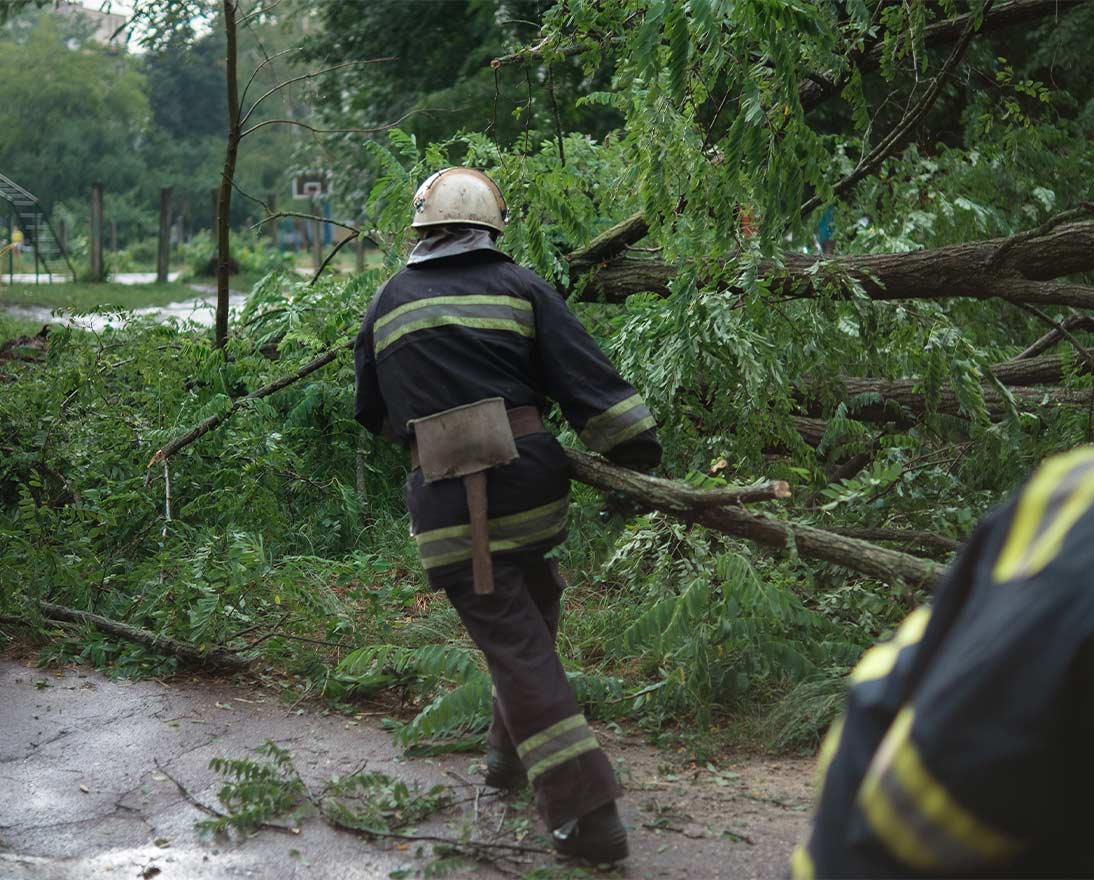Avoiding Atlantis: Will rising seas and coastal flooding wipe out some cities?
Natural hazardsArticleMay 27, 2024
As sea levels rise and coastal flooding intensifies, some cities could disappear. The rest will need to adapt, and quickly.
Atlantis may be a fictitious island lost to the sea, but for hundreds of coastal cities threatened by rising sea levels, Plato’s story may prove to be a prophecy.
According to the Intergovernmental Panel on Climate Change’s worst-case emissions scenario, sea levels will increase by up to 1.1 meters by 2100. This magnitude of sea level rise will intensify coastal flooding, but also inland areas not normally exposed to flood. This will displace people, damage city infrastructure and property, affect soil quality and generate billions of dollars of losses. Ultimately, some cities could become uninhabitable.
Worryingly, there are 570 coastal cities – with a total population of over 800 million – that are considered vulnerable to a sea level rise of just 0.5 meters by 2050. The problem is exacerbated by rapid urbanization, which is destroying coastal mangroves, reefs, marshes, sand dunes and wetlands that act as natural flood defenses. So, what is the solution for these communities: fight the rising tide or abandon their city to the sea and become an Atlantis of tomorrow?
“There’s no simple solution as the impact of rising sea levels will manifest itself in different ways at a regional level,” says Belinda Bates, Head of Development, Climate Resilience at Zurich Resilience Solutions.
“There’s a misconception that sea levels will rise uniformly over the planet, but it will differ regionally, dependent on a number of factors,” explains Bates. “Cities exposed to hurricanes or typhoons could have their storm surge risk amplified, while the extent of coastal erosion will vary as it is dependent on local wave dynamics.”
Turning back the tide
Michael Szönyi, Climate Director at the Z Zurich Foundation, says coastal cities must first control the creation of new risk. “This means adopting policies that prevent new development or an increase in population density arising in areas that are going to be most affected by sea level rise,” he explains.
But for existing flood risks, many cities are having to invest in hard-engineered solutions to prevent coastal flooding, including sea walls, storm surge barriers, water pumps and overflow chambers. Other cities are more focused on environmental approaches – also known as nature-based solutions. These may involve land recovery and the restoration of mangroves and wetlands to help cities cope with floodwater inundation.
The Netherlands is proving that both strategies work. Almost a third of the country is below sea level, but it is protected by a 3,700km (2,300 mile) network of dikes, dams and seawalls, including the famous Maeslant Barrier that shields the delta city of Rotterdam.
In the past two decades, the Dutch have complemented this hard infrastructure with water management strategies. This includes spatial planning that uses city parks and public spaces as emergency reservoirs for floodwaters. This is complemented by a concept called ‘Room for the River’ introduced a decade ago, which allows rivers to expand to cope with extra water by lowering floodplains, widening rivers and building side channels.
That sinking feeling
But in Indonesia’s capital Jakarta, one of the 570 coastal cities highlighted at risk, there lies an even bigger issue: the megacity is literally sinking, while the sea around it rises.
Jakarta is not the only city sinking, but its issues are particularly acute, with some parts in the north sinking by up to 25 cm a year. Today, about 40 percent of the city sits below sea level.
One of the key reasons for this severe land subsidence is excessive groundwater extraction. Only 60 percent of the city has pipe water infrastructure, forcing millions of people and businesses to pump water – often illegally – from aquifers deep underground for drinking, washing and other purposes.
Despite the rains, groundwater is not replenished as 97 percent of the city is covered in impermeable asphalt and concrete. So, when groundwater is pumped out, the land above sinks as if sitting on a deflating cushion.
Subsidence is a difficult problem to solve,” says Bates. “At a building level the solutions must be carefully planned as they can be disruptive, but how do you do it for a whole city? And it’s not just about protecting buildings, there are sewers, pipes, cables and other key infrastructure all underground. Solving all these problems could paralyze Jakarta.”
In response to the issues plaguing the city, the Indonesian government announced in 2019 that it was moving its capital from Jakarta to East Kalimantan on the island of Borneo to a new city called Nusantara. In the first out of five phases until 2045, development is focused on the core government area of Nusantara that will host a population of 1.2 million by 2029.
Szönyi believes it was a wise decision as relocating cities, or parts of cities, could be a viable option to climate change. “In the past there was a long tradition of abandonment due to environmental changes, such as drought or a loss of industry. Maybe we need to revive this tradition.
“I’m not suggesting cities in a situation like Jakarta abandon the whole city, but as the impacts from climate change become more severe, the need to take conscious decisions about managed retreat will inch closer. Some cities could give up coastal land that would protect people living in those areas, while providing a flood defense for the rest of the city’s population.”
As Jakarta grapples with its issues, the city could find some inspiration from the Dutch.
For more than 1,000 years, the Netherlands has been fighting back water and today has some of the world’s most sophisticated sea defenses. But this century, with its Room for the River and other water management strategies, it has learned to live with water.
Not only do cities like Jakarta need to learn to live with water, but respect and manage it too. This may include building nature-based and hard-engineered sea defenses, cleaning up rivers and canals, extending clean water and sanitation to all residents, and introducing measures to restrict groundwater extraction. And it may also include the Atlantis option by abandoning some city districts to the sea.
11 sinking cities that could disappear by 2100
1. Jakarta, Indonesia
2. Lagos, Nigeria
3. Houston, U.S.
4. Dhaka, Bangladesh
5. Venice, Italy
6. Virginia Beach, U.S.
7. Bangkok, Thailand
8. New Orleans, U.S.
9. Rotterdam, Netherlands
10. Alexandria, Egypt
11. Miami, U.S
Source: WEF

Climate Resilience
Our Climate Resilience experts help you identify and manage climate risks, and prepare you for climate reporting.



